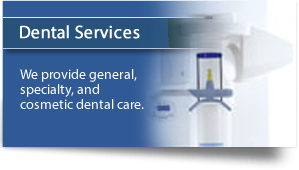Non-Surgical Root Canal Treatment
Over 14 million root canal treatments are performed in the US every year. It is a very viable alternative to tooth removal. This treatment can save your natural teeth and prevent the need of dental implants or bridges. At the center of your tooth is pulp tissue. The pulp is a collection of blood vessels and nerves that enters the tooth from the end of the root, via the root canal. Irritation to the pulp can be caused by trauma to the tooth, deep decay, cracks and chips, or repeated dental procedures. Symptoms of the infection can be identified as visible injury or swelling of the tooth, sensitivity to temperature, painful chewing or pain in the tooth and gums.
If you do experience symptoms, your dentist may recommend non-surgical treatment to eliminate the injured pulp. The pulp is removed and the root canal system is thoroughly cleaned and sealed down to the end of the root with a material called gutta percha. This therapy is usually performed under local anesthesia and completed in one visit. The success rate is about 85 to 90% if a tooth is without anatomical anomalies. The decision to perform this procedure is unique to each situation and needs to be discussed with your dentist.
The cost associated with this procedure varies depending upon which tooth is affected and the nature of the damage. In general, endodontic treatment is much less expensive than tooth removal and replacement with an artificial tooth. Typically, a build-up or post/buildup and a crown are required after root canal treatment.
Most root canal treated teeth remain trouble free. Approximately 10 to 15% of these teeth will continue to be symptomatic or may become symptomatic months or even years after treatment. This can be caused by a number of factors, the most common of which include infection due to inoperable anatomy of the root canal, persistent infection or re-infection from contamination, new or recurrent decay and, occasionally, tooth fracture. Most often the problems reside around the end of the root and occur most frequently on back teeth.
Short of removal of the tooth, the most common remedies involve re-treatment of the root canal, either surgically or non-surgically, at which time the root canals are sterilized and resealed. Non-surgical re-treatment involves accessing the root canals from the top of the tooth and removing the old root canal filling material. The root canals are then sterilized and resealed. Surgical re-treatment involves accessing the end of the root directly and resealing the root from the bottom of the tooth. In the case of a root fracture, which many times cannot be seen until the tooth is extracted, neither of these treatments will be successful. The tooth will need to be extracted.
Continue all medications for blood pressure, diabetes, thyroid problems and any other conditions as recommended by your physician. If there is a question, please call our office prior to your appointment. Please eat a full breakfast or lunch as applicable, unless you are having IV sedation or general anesthesia. If you have been advised by your physician or dentist to use antibiotic pre-medication because of mitral valve prolapse (MVP), heart murmur, hip, knee, cardiac or other prosthesis, or if you have rheumatic heart disease, please make sure you are on the appropriate antibiotic on the day of your appointment. If there is a question, please call our office prior to your appointment.

